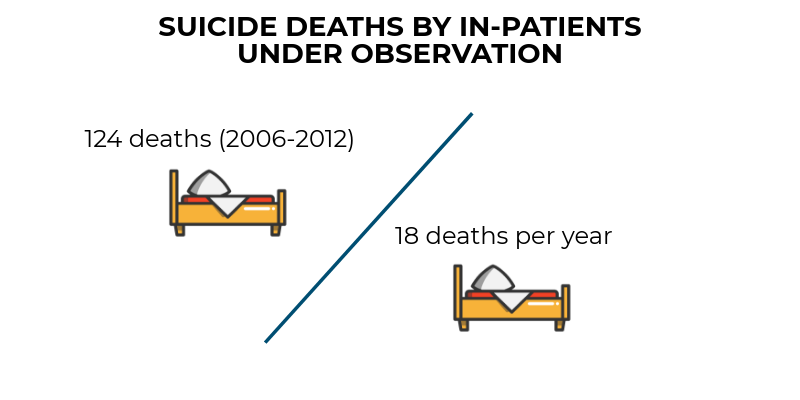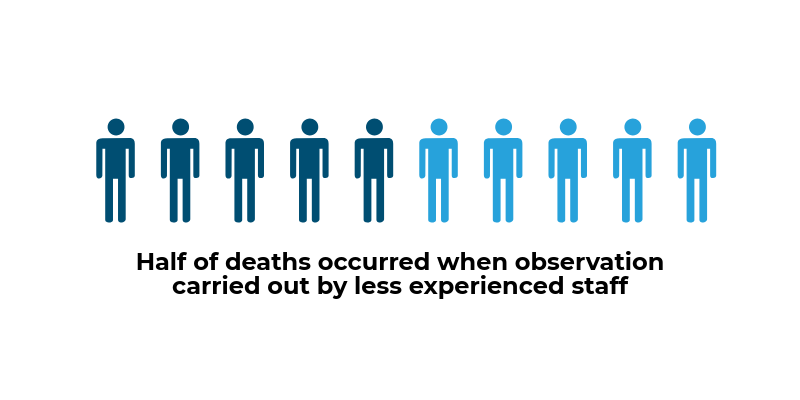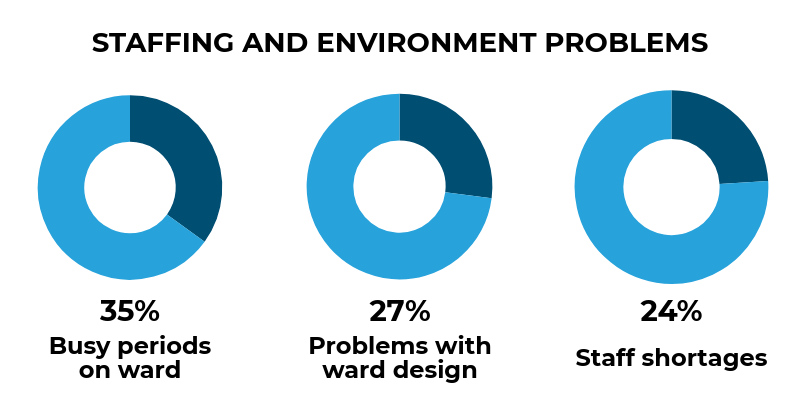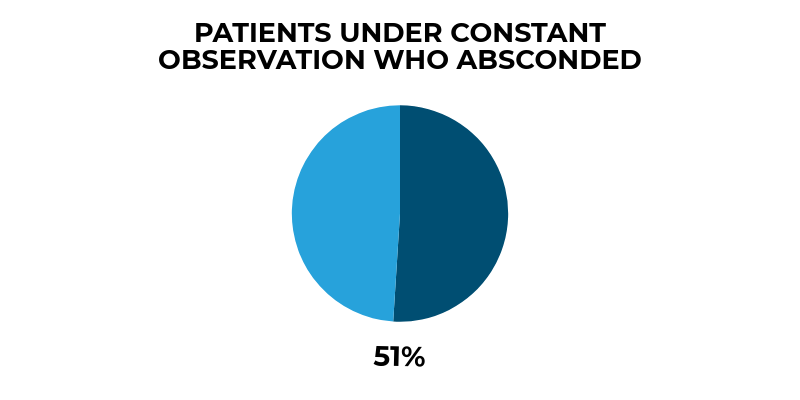
In-patient suicide under observation
Date of publication: March 2015
This investigation by the National Confidential Inquiry into Suicide and Safety in Mental Health (NCISH) examined suicides that had occurred in psychiatric in-patient care while the patient was under observation.
We looked at service-related factors related to the deaths, and asked patients and staff for their opinions on the effectiveness of and potential alternatives to observation.
Key messages
New models of observation are needed
The current observation approach (especially intermittent observation) is not working safely enough. There was on average of 18 suicides by in-patients under observation per year in the UK over a seven year study period. 91% of deaths under observation occurred under level 2 (intermittent) observation. New models need to be developed and evaluated.

An opportunity for engagement
 The observation component of a care plan should not be stand-alone; time with a patient is an opportunity for engagement within a comprehensive risk management plan.
The observation component of a care plan should not be stand-alone; time with a patient is an opportunity for engagement within a comprehensive risk management plan.
Observation is an acute intervention
Observation should be seen as an acute intervention; there should be a record of breaches and the transition to general observation should be planned. A balance of observation and active engagement should be agreed with the patient where possible. As an acute intervention, observation is a skilled task for staff of appropriate seniority.

Proper implementation of protocols
Deaths under observation tended to occur when policies or procedures (including times between observations) were not followed. The observation component of a risk management plan should follow clear protocols – which should be adhered to, recorded, and monitored – including actions to take if the patient absconds.

Suicide under observation an NHS ‘never event’?
 Suicide under observation (intermittent or constant) should be considered an NHS ‘never event’ in England and Wales (or as a serious adverse event in Northern Ireland and Scotland) and should be subject to independent investigation.
Suicide under observation (intermittent or constant) should be considered an NHS ‘never event’ in England and Wales (or as a serious adverse event in Northern Ireland and Scotland) and should be subject to independent investigation.
Breaches of protocol
All serious breaches of protocol in the care of patients under constant observation (for example, leading to self-harm and absconding, not only where there is a fatal outcome) should be investigated under NHS incident procedures.

